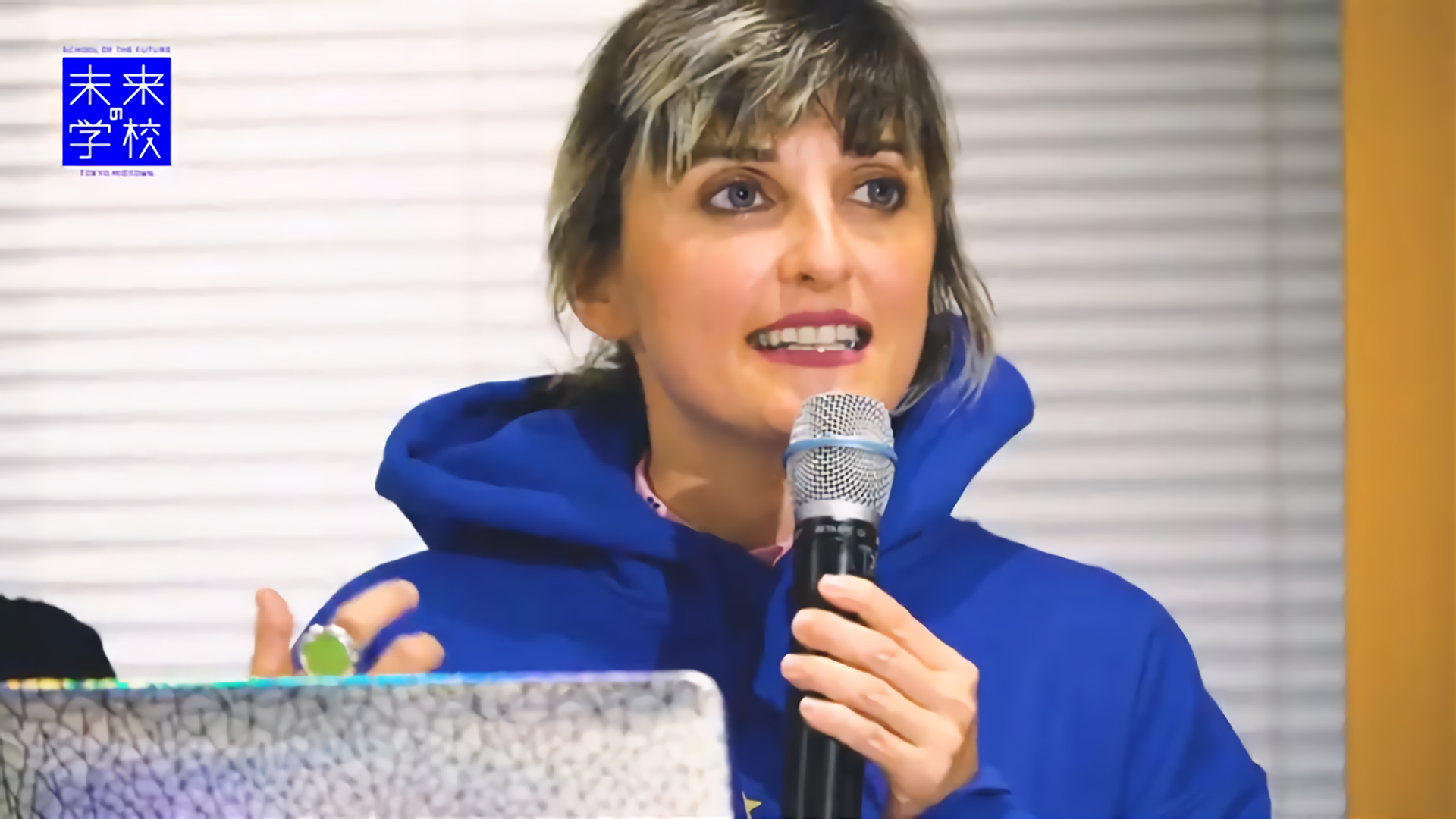ACTION REPORT
VOL.04SCHOOL OF THE FUTURE
-OPEN STUDIO-
"GOODBYE WORK Exhibition"
-Future Working-
-
- Organizer
- TOKYO MIDTOWN
- Collaboration Partner
- ARS ELECTRONICA
- Creator
- Pinar Yoldas
Filippo Giraldi

"SCHOOL OF THE FUTURE -OPEN STUDIO-" is a collaborative project by TOKYO MIDTOWN and ARS ELECTRONICA. Here is a report on the "GOODBYE WORK Exhibition" -Future Working-. The exhibition title says "GOODBYE WORK"—the opposite of Hello Work, a Japanese publicly operated employment service center that introduces job-seekers to employers. What message is it trying to convey? The key to answering that question is AI.
An Era in Which AI Becomes the Norm
The evolution of AI—artificial intelligence—has seen some astounding developments in recent years. Many jobs we are normally involved in or do directly ourselves now may be done by AI instead in the not-so-distant future. In particular, if AI frees us from doing tasks that are boringly simple or potentially dangerous, our lives will be the richer for it. So, when that future has actually arrived, what will work—and life—be like for us? Through works exhibited by MX3D and art projects by Pinar Yoldas, we should be able to get some hints about "Future Working."

Manufacturing in the Future, Done by People and Robots
MX3D has been working with Joris Laarman Lab on a public project. The concept is to make a steel bridge using a 3D printer, then actually erect it in the city of Amsterdam. "MX3D Bridge" is truly a practical experiment through which we can think about future factories, future manufacturing, and future urban design. What is important here is that just because automated robots will play active roles, that will not simply mean that humans will be eliminated from future work entirely. The important thing about the "MX3D Bridge" project is "collaboration by people and robots." A 3D printer cannot make a bridge on its own, and the project has not progressed solely through the MX3D team's efforts, either. Fillipo from MX3D emphasizes that it involves lots of collaboration by many people. There is a platform to enable multiple teams with different areas of expertise to discuss things and support each other, and through that, people and robots will design the social landscape while making good use of each other's strengths. This is precisely the kind of "future working" that "MX3D Bridge" presents.

Micro-Democracy through AI
"Kitty AI" is a visual work by Pinar Yoldas. It depicts a future in which, in the year 2039, an AI has taken the form of a kitten and become a governor. A future in which anyone can easily communicate directly with "Kitty AI" by downloading the app. According to Pinar, "Kitty AI is capable of showing its to love to 3 million people all at the same time," and with politics done based on direct communication like that, it represents "the achievement of micro-democracy." It is certainly true that at places like city hall, we can have to wait a long time even for minor procedures, and the procedures themselves are complicated and tiring. The candidates we have chosen in elections will not necessarily turn our opinions into reality in every respect, or include all the minute details. (Actually, that would be impossible for any human to do.) It is also a fact that this can make us feel disappointed in politics, and lose interest in it. But if it were done by an affective computer, and moreover one that looked like an adorable little kitten, politics would seem closer to our everyday lives. And surely that would lead to practical action.

"Future Working" Where People and Robots Work Hand in Hand
A talk event was held with Hideaki Ogawa and Kyoko Kunoh of ARS ELECTRONICA Futurelab, Editor-in-Chief of WIRED Japan, Michiaki Matsushima, and the two artists, Pinar and Fillipo. While explaining individual practical activities in specific detail, the discussion expanded to encompass what life will be like in a future where AI is a normal part of society. Just as Fillipo says, work for us humans will not actually drop to zero. The key point is that there will undoubtedly be major changes in our work styles. In a future where AI takes most simple tasks off our hands, it is going to be important to choose the "work styles we want," and think about what "time that is really necessary for ourselves." In a future like that, more attention will be given to altruistic work that will benefit other people, rather than work that serves egocentric purposes. As Pinar emphasizes, we can be certain that "it will not just be exciting talk about not having to work anymore, but will also require us to think seriously about how the systems that make up our society will change, who will be affected, and how." Technology itself is neutral. How it is used is entirely up to us. Besides, technology will not solve all our problems. Art has the power to generate "questions" that should give us many valuable insights for thinking about "Future Working," and about "Future Society." With humans and robots working hand-in-hand, perhaps we can create a rich, bright future—in "an age when people live for a 100 years."

MOVIE












